
Understanding the differences between the dot and cross products. Created by Sal Khan.
- Subject:
- Physical Science
- Physics
- Material Type:
- Lesson
- Provider:
- Khan Academy
- Provider Set:
- Khan Academy
- Author:
- Sal Khan
- Date Added:
- 08/08/2008

Understanding the differences between the dot and cross products. Created by Sal Khan.

In this activity, students play the roles of "time travel agents" creating an advertisement for a geologic time period which has been assigned to them. They will use the Earth Science Reference Tables (available on the internet) to learn some basic facts about their assigned period. A rubric for assessing student understanding is provided.
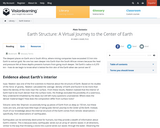
This lesson discusses the interior structure of the earth as defined by research on the behavior of seismic waves as they move through the layers inside of the planet. The lesson details both compositional layers as well as mechanical layers.
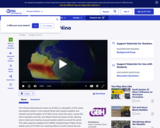
This video segment adapted from NASA's Goddard Space Flight Center describes El Niño, how it forms, and the chain reaction of consequences it triggers around the globe.

This video segment adapted from NASA's Goddard Space Flight Center explains how hurricanes develop and why there are fewer hurricanes in the Atlantic Ocean in strong El Niño years.
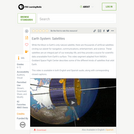
This video segment adapted from NASA's Goddard Space Flight Center shows how integral satellites are to everyday life and describes the different types, including orbital and geostationary.
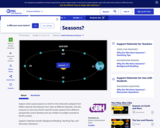
This interactive activity from the Adler Planetarium explains the reasons for the seasons. Featured is a game in which Earth must be properly placed in its orbit in order to send Max, the host, to different parts of the world during particular seasons.

This video segment adapted from NOVA tells the tragic story of two Japanese seismologists who disagreed about the threat of earthquakes in the early twentieth century. Today, seismologists in California offer residents a probability of risk that an earthquake might occur.
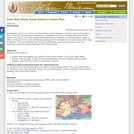
This lesson on earthquakes is based on naturalist John Muir's experiences with two significant earthquakes, the 1872 earthquake on the east side of the Sierra Nevada Mountains, and the Great San Francisco Earthquake of 1906. Students will learn to explain that earthquakes are sudden motions along breaks in the crust called faults, and list the major geologic events including earthquakes, volcanic eruptions and mountain building, which are the result of crustal plate motions. A downloadable, printable version (PDF) of the lesson plan is available.

In this video segment adapted from NOVA, animations are used to show how the hills around Los Angeles were formed by earthquakes at small thrust faults that extend outward from the larger San Andreas fault.

The history of earthquakes in the San Francisco Bay area is plotted on a digital map and analyzed in this video segment adapted from NOVA.

In this video segment adapted from NOVA, a geologist digs a trench along the San Andreas Fault to reveal three thousand years of earthquake history. Information from the layers of sediment may help geologists to predict earthquakes.
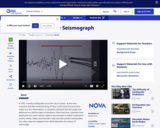
This video segment adapted from NOVA uses historical illustrations, photographs, and animations to explain how seismographs work, the difference between P and S waves, and the Richter scale.

This activity uses the free software 'Seismic Eruption' to visualize seismicity and volcanic activity in space and time and to explore the relationship of earthquakes and volcanic activiy to plate tectonics. Students run simulations on the Pacific coasts of South America and California and the mid-oceanic ridge in the Atlantic Ocean, answer questions, and construct a cross-section. A link to download the software is provided.
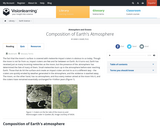
This module explores the composition of the earth's atmosphere, how temperature and pressure vary in the atmosphere, and the scientific developments that led to an understanding of these basic concepts.
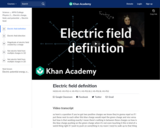
In this video David explains why physicists came up with the idea of the electric field, how it's useful, and explains how the electric field is defined. Created by David SantoPietro.
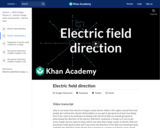
The direction of an electrical field at a point is the same as the direction of the electrical force acting on a positive test charge at that point. For example if you place a positive test charge in an electric field and the charge moves to the right you know the direction of the electric field in that region points to the right. Created by David SantoPietro.
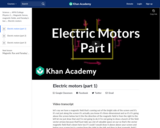
Sal shows that there will be a net torque on a loop of current in a wire. Sal shows that this net torque will cause the loop to rotate. Created by Sal Khan.
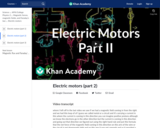
Sal shows that a commutator can be used in order to keep the loop of wire rotating in the magnetic field. Created by Sal Khan.
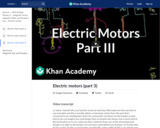
Sal finishes the explanation of how a commutator will allow a loop of wire to continue spinning in a magnetic field, thereby allowing it to work as an electric motor. Created by Sal Khan.